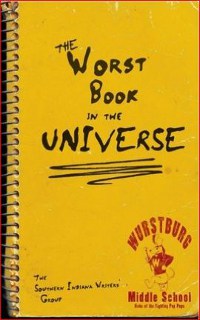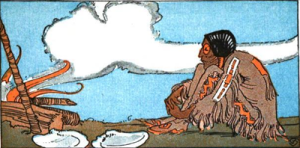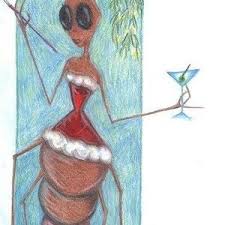 The Southern Indiana Writers, which I joined while the previous book was being readied for publication, has just come out with the 20th volume in their Indian Creek Anthology series. To commemorate the occasion we decided to name it XX: SIW Goes Platinum, with the work that appears in it to be arranged broadly around that theme: “Twenty, platinum, X, XX, cross, double-cross….” as editor Marian Allen summarizes in her short foreword.
The Southern Indiana Writers, which I joined while the previous book was being readied for publication, has just come out with the 20th volume in their Indian Creek Anthology series. To commemorate the occasion we decided to name it XX: SIW Goes Platinum, with the work that appears in it to be arranged broadly around that theme: “Twenty, platinum, X, XX, cross, double-cross….” as editor Marian Allen summarizes in her short foreword.
Since I had nineteen volumes of lost time and space to make up for, I muscled my way into this one with a single longer story and a series of four short-shorts. The first and longest, actually, “Brotherhood of Man and Beast,” some of my readers may recall my having spoken of in a couple of earlier postings. Added to the mix rather late in the process, the story itself seemed to fit the mold while, at the same time, the SIW anthology and small publisher Per Bastet answered my need with an immediate and fitting Kentuckiana-centric (but non-exclusive!) audience.
“Brotherhood,” in any case, is a serious-minded comedy with a light touch and an odd coupling of protagonists: a high-school English teacher who, in the context of a unit on argument and persuasion, decides to introduce Darwin into his curriculum; and the country preacher who learns of the scheme and inserts himself, at first adversarially, into the process. However unlikely the friendship and dialogue that ensue, I believe the story is credibly imagined and, therefore, hardly inconceivable; it is my hope that, beginning with a small segment of Middle-American society, it might provoke a spirited and civil conversation that extends itself outward in a gradually expanding circle of readers.
The series of shorter “Madcap Midwestern Mythologies” (united under that title and dispersed, with their own subtitles, among the anthology’s other offerings) attempts to bring hearers and readers alike, with whatever “thread of sanity” we retain possession of, pleasurably into a safe, reflective place beyond the clutches of “this infernal Funny Farm we call the civilized world.” While “Brotherhood” could take place here or in just about any state roundabout, these tall tales do originate precisely in a southern Indiana county much like the one I inhabit—in a country village not unlike Tobinsport, the “wide spot in the road” where my father grew up.
With more than a bit of a magical-realist flair, our young narrator Madeline (“Maddie”) S. Polk, “village fabulist and yarn-spinner extraordinaire,” enriches the local folklore with improbable accounts interwoven with elements ranging from frontier America and ancient Mexico or Guatemala to the Spain of Miguel Cervantes and, of course, ancient Greece—fabricated, as we intuit by the end of the fourth story, in the context of a classroom assignment.
The Napoleon Bonaparte Sanders who appears in a couple of these stories is born of foggy memories of decades-old conversations about my even-more shadowy great-great grandfather who (I kid you not!) bore that name. While the particulars of his legend are strictly invented, I like to think that they fit very nicely with the spirit of his character as it came down to me; and am pleased to recognize Maddie Sanders Polk as a precocious forerunner of her distant cousin, the literary translator and writer of slight renown who has composed these words.
Other writers whose work appears in the volume are Brenda Drexler, T. Lee Harris, Andrea Gilbey, Bonnie Abraham, Ginny Fleming, Janet Wolanin Alexander, Marian Allen, and Michele Hubler.
 Copies of XX: SIW Goes Platinum may be purchased for Kindle or in paperback from https://www.amazon.com/XX-Platinum-Indian-Creek-Anthology/dp/1942166184. (For others of Per Bastet’s offerings—including volume 19 of the anthology series: The Worst Book in the Universe, the latest sensation among middle-grade readers; along with a growing selection of speculative fiction including fantasy, science fiction, paranormal, mystery, and even the struggle of a recently-dead woman to escape from Hades and a gritty crime-drama with a vampiric narrator-protagonist—visit their site at www.perbastetpublicatons.com.)
Copies of XX: SIW Goes Platinum may be purchased for Kindle or in paperback from https://www.amazon.com/XX-Platinum-Indian-Creek-Anthology/dp/1942166184. (For others of Per Bastet’s offerings—including volume 19 of the anthology series: The Worst Book in the Universe, the latest sensation among middle-grade readers; along with a growing selection of speculative fiction including fantasy, science fiction, paranormal, mystery, and even the struggle of a recently-dead woman to escape from Hades and a gritty crime-drama with a vampiric narrator-protagonist—visit their site at www.perbastetpublicatons.com.)








